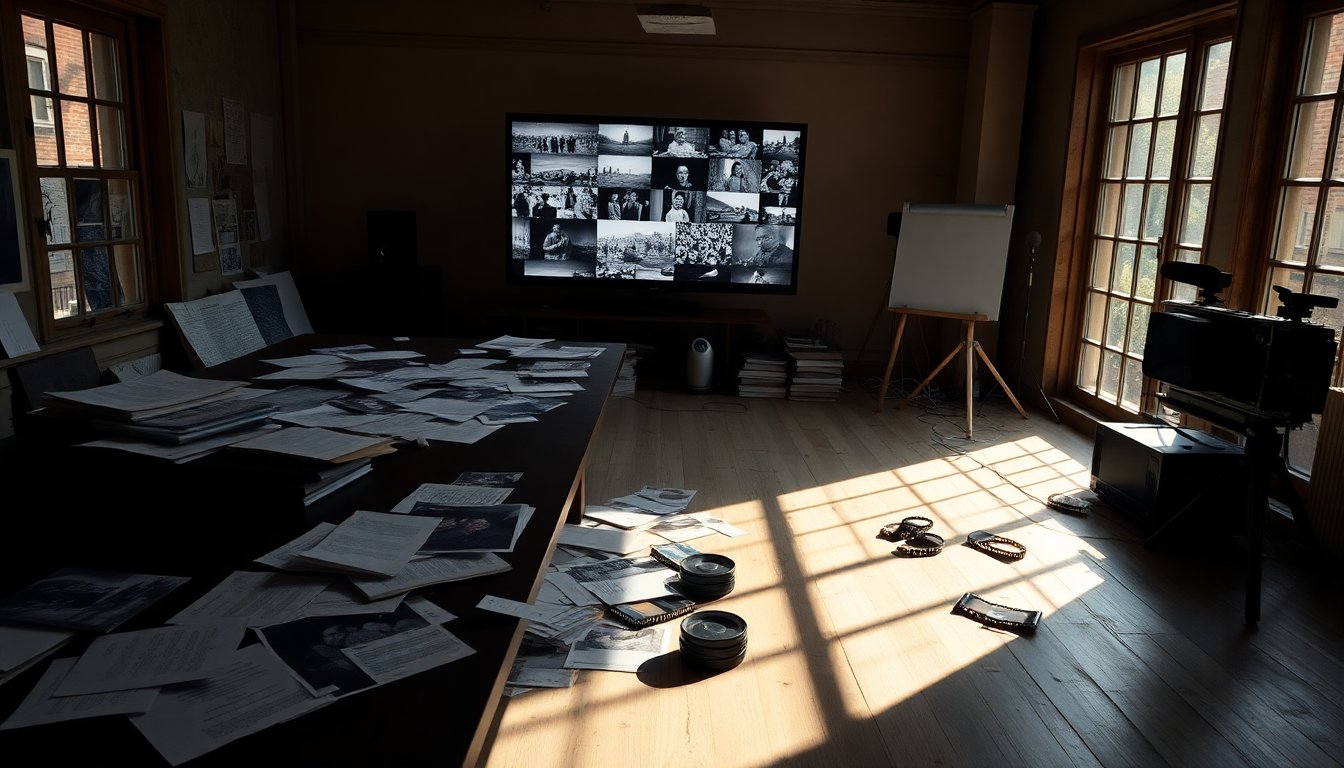Table of Contents
The integration of documentary footage into films has emerged as a powerful tool for filmmakers seeking to evoke strong emotions and convey stark realities. In recent years, two significant films exemplify this trend: ‘The Voice of Hind Rajab’ and ‘Nuremberg’. These films utilize real recordings and historical footage to amplify their dramatic impact, raising important questions about the nature of storytelling in cinema.
As we examine these films, we observe how the raw power of reality can reshape audience perceptions, often rendering scripted performances inadequate by comparison.
Documentary Evidence as a Dramatic Centerpiece
‘The Voice of Hind Rajab’ presents a harrowing depiction of a tragic event that unfolded in Gaza on January 29, 2024. Set primarily in the offices of the Palestine Red Crescent Society, the film immerses viewers in a dire situation where call-center operators struggle to assist civilians caught in conflict. The narrative centers on a young girl, Hind Rajab, who is trapped in her family’s car, surrounded by the lifeless bodies of her relatives. Her voice, captured in a real recording, adds a profoundly disturbing authenticity.
The film’s pacing mirrors the urgency of real-time events as the staff attempts to secure medical assistance for Hind, a task fraught with danger as the ambulance risks becoming a target. Although Hind is never seen, the chilling reality of her situation reverberates through her recorded pleas for help, merging documentary and dramatization in a unique manner. The film’s emotional weight is both cathartic and manipulative, compelling audiences to confront the harsh realities of war.
The Hybrid Nature of Storytelling
By blending documentary elements with dramatic recreations, ‘The Voice of Hind Rajab’ raises critical questions about the efficacy of traditional storytelling. The focus on Hind’s voice drives the narrative, often overshadowing the performances of actors portraying the Red Crescent volunteers. This emphasis on a singular, haunting voice encapsulating fear and confusion serves as a stark reminder of the real-life horrors that inspire such cinematic depictions.
The Weight of Historical Context in ‘Nuremberg’
In contrast, ‘Nuremberg’ addresses the infamous trial of Hermann Göring, one of the principal architects of the Holocaust. Premiering at the Toronto Film Festival, this film adopts a more conventional dramatic approach, presenting a polished narrative on justice and morality. Russell Crowe portrays Göring, and while his performance offers gravitas, the film’s most poignant moments arise from its inclusion of actual footage from Nazi concentration camps.
During courtroom scenes, audiences encounter stark images of the atrocities committed during the war. The filmmakers purposefully incorporated several minutes of unedited documentary footage, showcasing the grim realities faced by countless victims. This decision serves as a powerful reminder of history as such events gradually fade from collective memory. By exposing audiences to this footage, ‘Nuremberg’ aims to elicit a visceral reaction that reinforces the significance of its narrative.
Confronting the Past through Cinema
However, the juxtaposition of dramatic storytelling with genuine historical footage presents a challenge. While the documentary evidence heightens emotional stakes, it inadvertently diminishes the dramatic tension within courtroom scenes. As audiences grapple with horrific images, scripted interactions risk feeling contrived or formulaic. The film thus raises a critical question: can dramatic storytelling retain its potency when set against the backdrop of such overwhelming reality?
Ultimately, both ‘The Voice of Hind Rajab’ and ‘Nuremberg’ utilize documentary elements to create a profound impact. They challenge viewers to reconcile the harsh truths of history with the crafted narratives of film. As cinema continues to evolve, the line between reality and fiction blurs, prompting audiences to reflect on the power of storytelling in illuminating the human experience.


